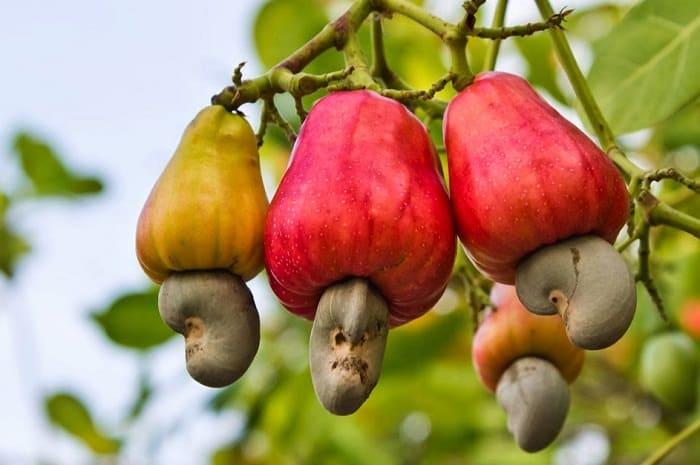The cashew nut fruit, also known as the "cashew apple" or "anacardium," is the fleshy, pear-shaped structure that grows at the end of the cashew seed. The seed itself is the cashew nut we commonly eat.
Here are some key details about the cashew nut fruit:
-
Appearance: The cashew fruit has a vibrant color, typically ranging from yellow to red. It's soft and juicy, with a sweet, slightly tangy flavor.
-
Structure: The fruit consists of two parts:
- The cashew apple, which is the fleshy part of the fruit.
- The cashew nut, which is attached to the bottom of the apple and is encased in a hard shell.
-
Edibility: While the cashew nut is widely consumed in its roasted or salted form, the cashew apple is often overlooked in many parts of the world. However, in places like India, Brazil, and parts of Africa, the cashew apple is eaten fresh or used to make juices, jams, and even alcoholic beverages like "feni" in Goa, India.
-
Nutritional Value: The cashew apple is rich in Vitamin C, antioxidants, and other nutrients. It is less calorie-dense compared to the cashew nut, but it provides a refreshing and tangy flavor.
-
Uses: In addition to being consumed fresh or made into beverages, the cashew apple can be processed into candies, dried fruit, or even used in culinary dishes in regions where it is available.
The cashew fruit is less commonly seen in grocery stores, mainly due to its perishable nature, which makes it challenging to transport long distances. The cashew nut, on the other hand, is widely available and well-known around the world.

